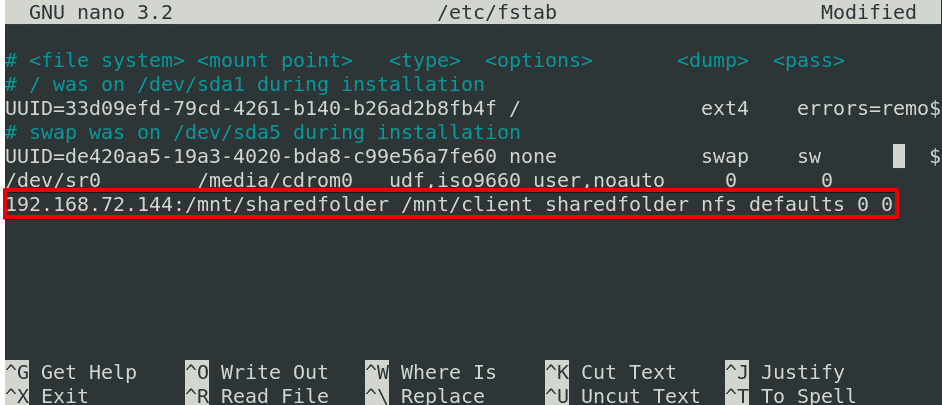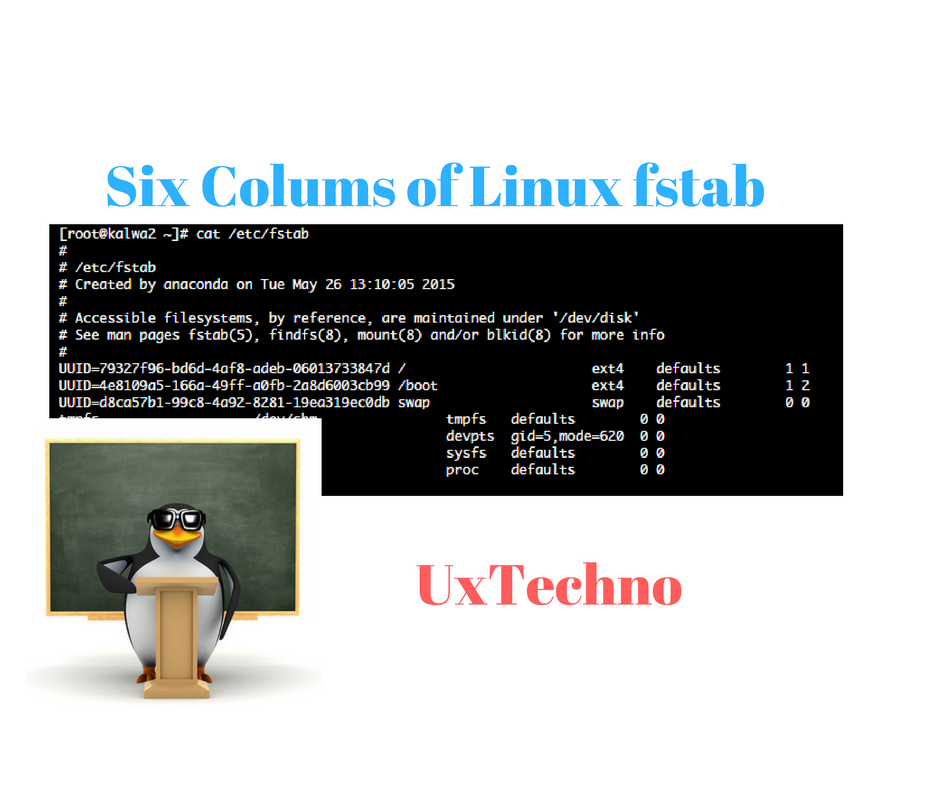
In plain English, this means that when you, for example, copy a file to the floppy, the changes are physically written to the floppy at the same time you issue the copy command. If you look at the example fstab, you’ll notice that this is the option used with the floppy. Sync and async How the input and output to the filesystem should be done. Again, using this option might cure the headache of many new Linux users who are tearing their hair off because they can’t write to their floppies, Windows partitions, or something else. Imagine what would happen if you accidentally used the noexec option with your Linux root partition… exec is the default option, which is a good thing. This might be the case of a Windows partition. noexec might be useful for a partition that contains binaries you don’t want to execute on your system, or that can’t even be executed on your system. If you’re not able to mount your cdrom, floppy, Windows partition, or something else as a normal user, add the user option into /etc/fstab.Įxec and noexec: exec lets you execute binaries that are on that partition, whereas noexec doesn’t let you do that. nouser is the default, which is a major cause of headache for new Linux users. The user option allows normal users to mount the device, whereas nouser lets only the root to mount the device. User and nouser: These are very useful options. With noauto, the device can be mounted only explicitly. If you don’t want the device to be mounted automatically, use the noauto option in /etc/fstab. For more information, check out the man page of mount.Īuto and noauto: With the auto option, the device will be mounted automatically (at bootup, just like I told you a bit earlier, or when you issue the mount -a command). Yes, there are many options available, but I’ll take a look at the most widely used ones only. This is also the most confusing column in the fstab file, but knowing what some of the most common options mean, saves you from a big headache. The fourth column in fstab lists all the mount options for the device or partition. That’s why it’s wise to let the system automatically detect the filesystem type of media such as floppies and cdroms. One floppy might be formatted for Windows and the other for Linux’s Ext2. If you take a look at the example fstab below, you’ll see that the floppy and CD-ROM both have “auto” as their file system type. The 9x series (95, 98, ME) all use Vfat, and the NT series (NT, 2000, XP, Vista, 7) use NTFS but they may be formatted as Vfat, too.Īuto No, this isn’t a filesystem type 🙂 The option “auto” simply means that the filesystem type is detected automatically. Your Windows partitions are probably either Vfat or NTFS. Vfat and ntfs Your USB stick is most likely formatted as Vfat (more widely known as FAT32). The filesystem type “swap” is used in your swap partitions.


Swap The filesystem name is self-explanatory. It is most superior filesystem as of now. Many Linux distros (including SuSE) have started using ReiserFS as their default filesystem for Linux partitions.Įxt4 Next gen of extX file systems, it is used and recommended by most distros. Like Ext3, ReiserFS is a journaled filesystem, but it’s much more advanced than Ext3. Reiserfs Your Linux partitions may very well be formatted as ReiserFS. Ext3 is a newer filesystem type that differs from Ext2 in that it’s journaled, meaning that if you turn the computer off without properly shutting down, you shouldn’t lose any data and your system shouldn’t spend ages doing filesystem checks the next time you boot up. Ext2 used to be the standard filesystem for Linux, but these days, Ext3 and ReiserFS are usually the default file systems for almost every new Linux distro.

Typically, this name starts with /dev.Ĭol 2: This is the *NIX filename on the directory structure where the device or partition is to be mounted (mount point).Ĭol 3: file system type used on file system being mounted.Ĭol 4: Mount options (sore are filesystem specific), for details follow chart.Ĭol 5: dump column it is used by the dump utilityĬol 6: order fsck checks a file system when the system is booted, example: /dev/hda2Įxt2 and ext3 Very likely your Linux partitions are Ext3. Fstab is a file like everything else in linux, its can be opened using command: sudo gedit /etc/fstabĬol 1: This is the *NIX filename representing the physical device or partition.


 0 kommentar(er)
0 kommentar(er)
